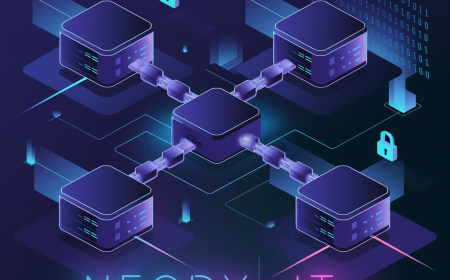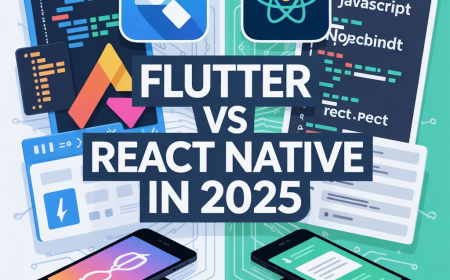What is an API? A Beginner's Guide How They Work
Learn what an API is, how it works, and why it's important for developers. A complete beginner's guide by neodyit

-
What is an API?

An API (Application Programming Interface) is a set of rules and definitions that allows one software application to communicate with another. APIs enable different systems, services, or applications to work together, even if they are built on different platforms or programming languages.
Example:
- When you use a weather app, it fetches the latest weather data from a server using an API.
- When you log into a website using your Google or Facebook account, an API is used to authenticate your identity.
APIs act like messengers that take requests from a client (e.g., your phone or browser), communicate with the server, and return the requested data or action.
-
How Does an API Work?
APIs work through a system of requests and responses. Here’s how the process works:
- Client Request – A user sends a request (e.g., asking for weather data).
- API Call – The request is sent to the API endpoint.
- Data Processing – The server processes the request and fetches the required data.
- Response – The server sends the data back to the client through the API.
? Example: When you search for a location on Google Maps, your request is processed via the Google Maps API, which returns map data as a response.
-
Types of APIs
APIs can be categorized into four main types based on their accessibility and usage:
-
Open APIs (Public APIs)
- Open to all developers and users.
- Example: Twitter API allows developers to access tweet data.
-
Partner APIs
- Only available to specific partners or authorized developers.
- Example: Uber API is available to selected partners for ride-sharing services.
-
Internal APIs (Private APIs)
- Used internally within an organization.
- Example: A company's employee portal API used to access internal data.
-
Composite APIs
- Combines multiple APIs into one request.
- Example: An API that retrieves user data and order history simultaneously.
-
-
Common API Protocols
APIs use different protocols and architectures to structure how data is exchanged.
-
REST (Representational State Transfer)
- Most commonly used.
- Uses standard HTTP methods (GET, POST, PUT, DELETE).
- Lightweight and easy to integrate.
-
SOAP (Simple Object Access Protocol)
- Uses XML-based messages.
- More secure but heavier than REST.
-
GraphQL
- Developed by Facebook.
- Allows clients to request only the data they need.
-
-
Why Are APIs Important?
APIs provide several benefits:
✅ Increased Efficiency – Reduces development time by allowing reuse of existing code.
✅ Improved Integration – Connects different platforms and systems.
✅ Scalability – Handles growing user requests without modifying core code.
✅ Customization – Allows developers to customize user experiences. -
How to Use an API – A Simple Example
Here’s a simple example using a REST API to get weather data from OpenWeatherMap:
Sample Code (JavaScript):
const apiKey = 'YOUR_API_KEY'; const city = 'London'; fetch(`https://api.openweathermap.org/data/2.5/weather?q=${city}&appid=${apiKey}`) .then(response => response.json()) .then(data => console.log(data)) .catch(error => console.error('Error:', error));Explanation:
- The
fetch()method sends a request to the OpenWeatherMap API. - The server processes the request and returns weather data in JSON format.
- The data is logged to the console.
- The
-
Best Practices for API Integration
✅ Use secure API keys and tokens.
✅ Handle errors and exceptions properly.
✅ Optimize data requests to avoid overloading the server.
✅ Use versioning to manage API updates.
✅ Document the API usage for future reference. -
Challenges and Solutions in API Integration
Challenge: API rate limits.
Solution: Use caching and optimize the number of requests.Challenge: Authentication issues.
Solution: Implement OAuth or API key-based authentication.Challenge: Slow response time.
Solution: Use efficient data processing and caching techniques. -
Conclusion
APIs are the backbone of modern web and mobile development. They allow applications to communicate with each other, share data, and enhance user experiences. Whether you're using public APIs like Google Maps or developing private APIs for internal use, understanding how APIs work is essential for any developer.
At Neody IT, we aim to simplify coding and development for beginners and professionals alike. Mastering APIs will help you build better apps and integrate powerful features into your projects. Stay tuned for more articles on coding, APIs, and beyond at Neody IT
What's Your Reaction?
 Like
4
Like
4
 Dislike
0
Dislike
0
 Love
1
Love
1
 Funny
0
Funny
0
 Angry
0
Angry
0
 Sad
0
Sad
0
 Wow
2
Wow
2


















































